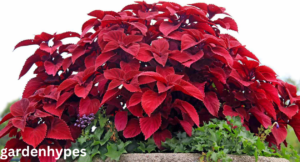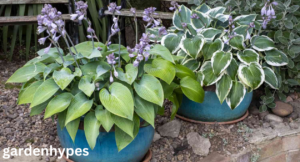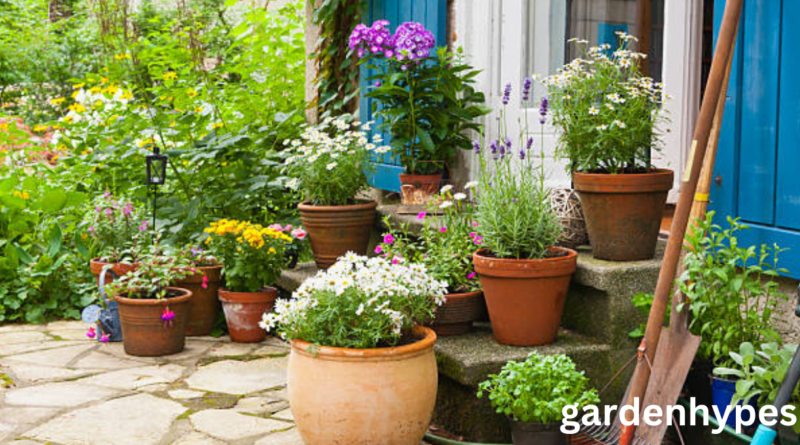Outdoor Potted Plants Guide to Beautifying Your Garden
If you’ve ever walked through a neighborhood and noticed how some homes stand out with vibrant greenery and colorful blooms, chances are potted plants played a big role. Outdoor potted plants are one of the simplest yet most effective ways to beautify a garden, balcony, or even a small patio. They add charm, improve air quality, and give you the flexibility to experiment with different designs. Unlike traditional gardening, you don’t need a huge yard or expensive landscaping—just a few good pots and the right plants can completely transform your space.
click in link homemade weed control
In this guide, we’ll explore everything you need to know about outdoor potted plants—from choosing the right containers to maintaining healthy greenery all year long.
Introduction to Outdoor Potted Plants
Potted plants have been around for centuries, but in today’s fast-paced lifestyle, they’ve become even more valuable. Not everyone has the luxury of a spacious backyard, but with outdoor pots, even a tiny balcony or front porch can look like a mini garden oasis.
One of the greatest advantages of outdoor potted plants is flexibility. Unlike planting directly in the ground, containers allow you to move your plants around. Want a splash of color near your doorway for spring? You can shift blooming pots right where they’ll be most admired. Tired of one arrangement? Simply re-arrange them like you’re redecorating your home.
Besides their decorative appeal, potted plants also make gardening more manageable. They’re easier to maintain, require less weeding, and are ideal for experimenting with different plant types. For example, you can grow flowers, herbs, or even dwarf fruit trees—all in containers.
Another benefit is control. With pots, you can regulate soil type, moisture levels, and even sunlight exposure better than in a traditional garden bed. This makes it possible to grow plants that wouldn’t normally thrive in your local soil conditions.
But perhaps the most rewarding part? The joy they bring. There’s something deeply satisfying about nurturing a plant and watching it grow right outside your home, adding life and beauty to your everyday surroundings.
Choosing the Right Pots for Outdoor Plants
The container you choose is just as important as the plant itself. A poorly chosen pot can stunt a plant’s growth, while the right one can help it thrive beautifully.
Material Types
Different pot materials have their own strengths and weaknesses:
- Clay or Terracotta Pots: These are classic choices, known for their natural look. They’re great for plants that prefer drier soil because clay absorbs moisture. However, they can crack in freezing weather.
- Ceramic Pots: Glazed ceramic pots are stunning and come in vibrant designs, but they’re heavy and may not handle extreme temperature changes well.
- Plastic Pots: Lightweight and affordable, plastic pots are easy to move around. They retain moisture well but may not be as durable or stylish.
- Metal Pots: Modern and sleek, but they can heat up quickly in the sun, which might harm roots.
- Wooden Planters: Rustic and charming, especially for outdoor spaces, but they need proper treatment to prevent rotting.
Size and Depth Considerations
Choosing the correct size is essential. A pot that’s too small will restrict root growth, while one that’s too big may cause soil to stay too wet, leading to root rot. A good rule of thumb is to pick a pot that allows at least a couple of inches of space around the plant’s root ball.
click in link homemade weed control

Drainage Importance
Drainage is a non-negotiable factor. Outdoor plants need pots with drainage holes at the bottom to prevent waterlogging. If your favorite decorative pot doesn’t have holes, you can place a smaller pot with drainage inside it or drill holes carefully.
By paying attention to these details, you’ll give your plants the perfect home to thrive in.
Best Outdoor Potted Plants for All Seasons
One of the best parts about outdoor potted gardening is the wide range of plants you can grow. Whether you want a pop of color, evergreen charm, or easy-care greenery, there’s something for everyone.
Flowering Plants
Flowers instantly brighten any outdoor space. Some great choices include:
- Geraniums: Hardy, colorful, and long-lasting.
- Petunias: Available in countless shades, great for hanging pots.
- Marigolds: Not only cheerful but also great for repelling pests.
Evergreen Plants
If you prefer year-round greenery, evergreen plants are perfect:
- Boxwood: Ideal for shaping into neat forms.
- Juniper: Low-maintenance and drought-tolerant.
- Lavender: Adds fragrance along with beauty.
Low-Maintenance Choices
For busy individuals, low-care plants are the way to go:
- Succulents: Thrive with little water.
- Snake Plant: Almost indestructible and stylish.
- Aloe Vera: Useful and easy to grow.
By mixing flowering, evergreen, and low-maintenance options, you can create a balanced and beautiful display that lasts throughout the year.
Tips for Arranging Outdoor Potted Plants
Arranging pots is like decorating a room—it’s all about balance, color, and creativity.
Grouping Plants
Instead of scattering pots randomly, group them for a more impactful look. Place a few large pots as anchors, then add medium and smaller pots around them. This layered effect creates visual depth.
Using Height and Color Contrast
Think of your arrangement like a painting. Tall plants at the back, medium in the middle, and trailing plants spilling over at the front make a perfect composition. Use color contrasts—such as pairing deep purples with bright yellows—to make your display pop.
Creating a Focal Point
Every arrangement benefits from a “star of the show.” This could be a large flowering pot or even a decorative container that draws attention. Surround it with smaller, simpler pots so the eye naturally focuses on the centerpiece.

Remember, there are no strict rules—arranging plants is an art form. Play around, and soon you’ll develop your own style.
Essential Care and Maintenance of Outdoor Potted Plants
Once you’ve chosen your pots and arranged them beautifully, the next step is keeping them healthy.
Watering Techniques
Potted plants dry out faster than garden soil, especially in summer. A good practice is to check moisture levels daily by sticking your finger about an inch into the soil. If it feels dry, it’s time to water. Always water thoroughly until it drains from the bottom.
Fertilizing Schedules
Since nutrients in pots get used up quickly, fertilizing is essential. A balanced liquid fertilizer every 2–4 weeks works for most plants. For long-term feeding, slow-release granules are a great option.
click in link homemade weed control
Pest and Disease Protection
Outdoor plants are prone to pests like aphids, spider mites, and fungal infections. Regularly inspect leaves for signs of trouble. Neem oil or insecticidal soap can handle most issues naturally without harming the plant.
By giving your plants consistent care, they’ll reward you with lush growth and vibrant blooms.
faqs
- What are the easiest outdoor plants to grow in pots?
Some of the easiest outdoor potted plants include geraniums, petunias, marigolds, succulents, and snake plants. They require minimal care and thrive well in containers, making them perfect for beginners. - How often should I water outdoor potted plants?
It depends on the plant and weather conditions. Generally, check the soil daily—if the top inch feels dry, it’s time to water. During hot summer months, most outdoor potted plants may need watering once or even twice a day. - Do outdoor potted plants need fertilizer?
Yes, because nutrients in potting soil get depleted quickly. A balanced liquid fertilizer every 2–4 weeks or slow-release fertilizer every few months helps keep plants healthy and blooming. - How do I stop my potted plants from drying out too quickly?
Choose larger pots that hold more soil, add mulch on top to retain moisture, and water deeply rather than frequently. Using self-watering containers can also help keep soil consistently moist. - Can outdoor potted plants survive winter?
Some can, especially evergreen and hardy plants. However, many tender plants won’t survive frost. You can either move pots indoors during winter or cover them with frost cloth to protect them.
